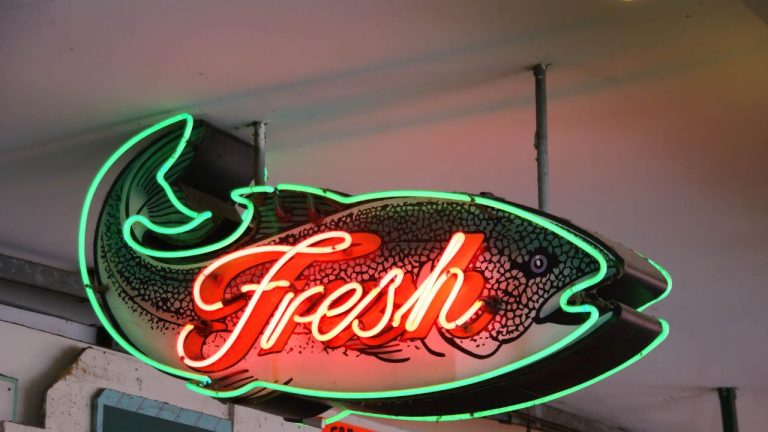The history of neon advertising began in 1912 in Paris. At that time, just fourteen years after the noble gas was discovered by two English chemists, Georges Claude and Jacques Fonseque sold a sign shaped as neon lettering for a hairdressing salon. They were the first to recognise the potential neon light offered to the burgeoning advertising industry. With the help of extremely flexible and thin glass tubes, it was possible to create not only abstract decorations but also letters and figurative motifs in almost unlimited colourful richness.
Although the first neon decorations originated in France, their triumph began in the United States, where the first advertisements appeared in Los Angeles in 1923. Neon advertising became the “glowing symbol” of America’s rise to a leading economic and trading power. It emerged as the ideal expression of a modern, dynamic industrial society. With oversized decorations shining in changing colours, public spaces in city centres were transformed into commercial advertising areas. Our perception of the “American way of life” is significantly shaped by the image of New York’s Times Square illuminated in neon and the glittering lights of Las Vegas.
While even the global economic crisis of the late twenties did not lead to a decline in neon advertising, the post-World War II era marked the beginning of its gradual decline with the competition of new advertising media. With the introduction of illuminated Plexiglas boxes, which were printed using screen printing, city centres gradually acquired a new, modern design adapted to the changing times. Alongside these, neon advertisements soon appeared as symbols of a bygone era, an American “art deco” of the thirties. Eventually, neon decorations were mostly encountered in cheap eateries and as advertising for run-down hotels. Only in the postmodern design of the eighties was neon rediscovered and used for the architectural design of fashionable bars, boutiques, and nightclubs.
However, as commercial interest in neon waned, visual artists began to take an interest in this medium.
Today (2018), neon is making a comeback, and the demand for this craft is highly valued and is once again very much in vogue.


